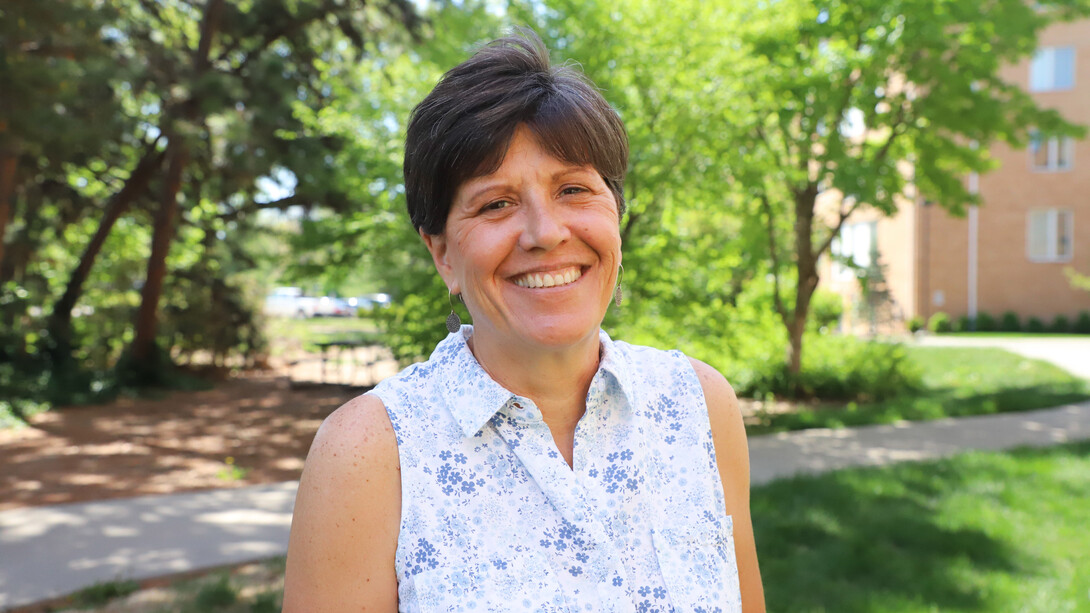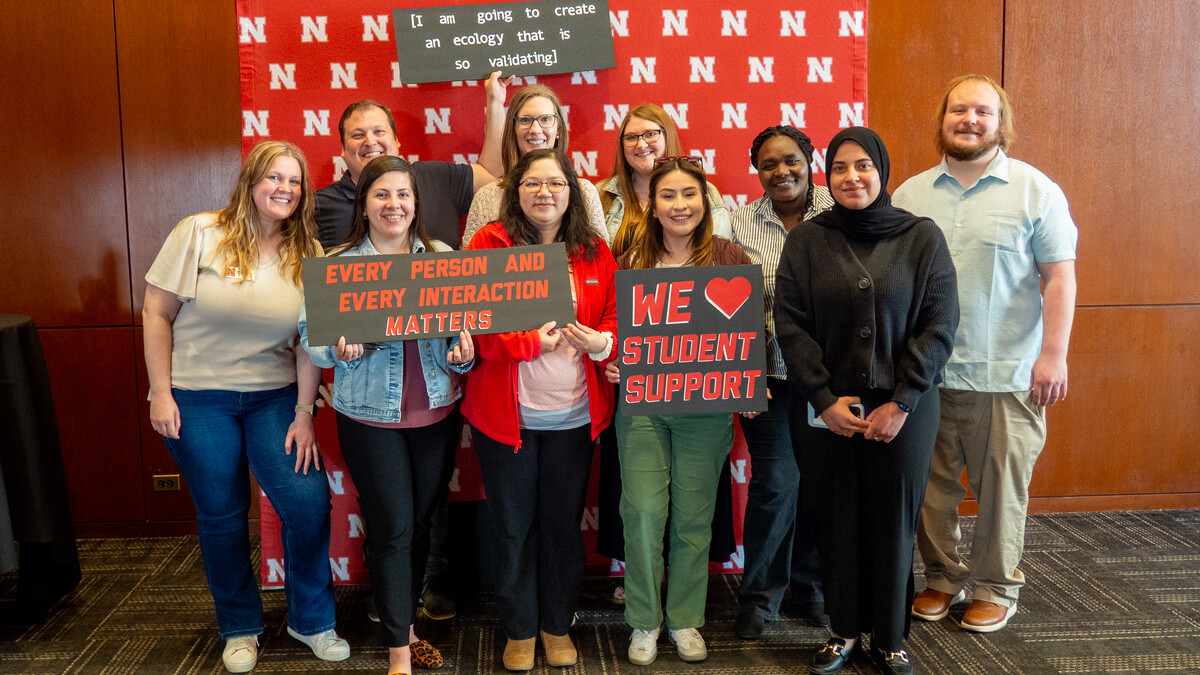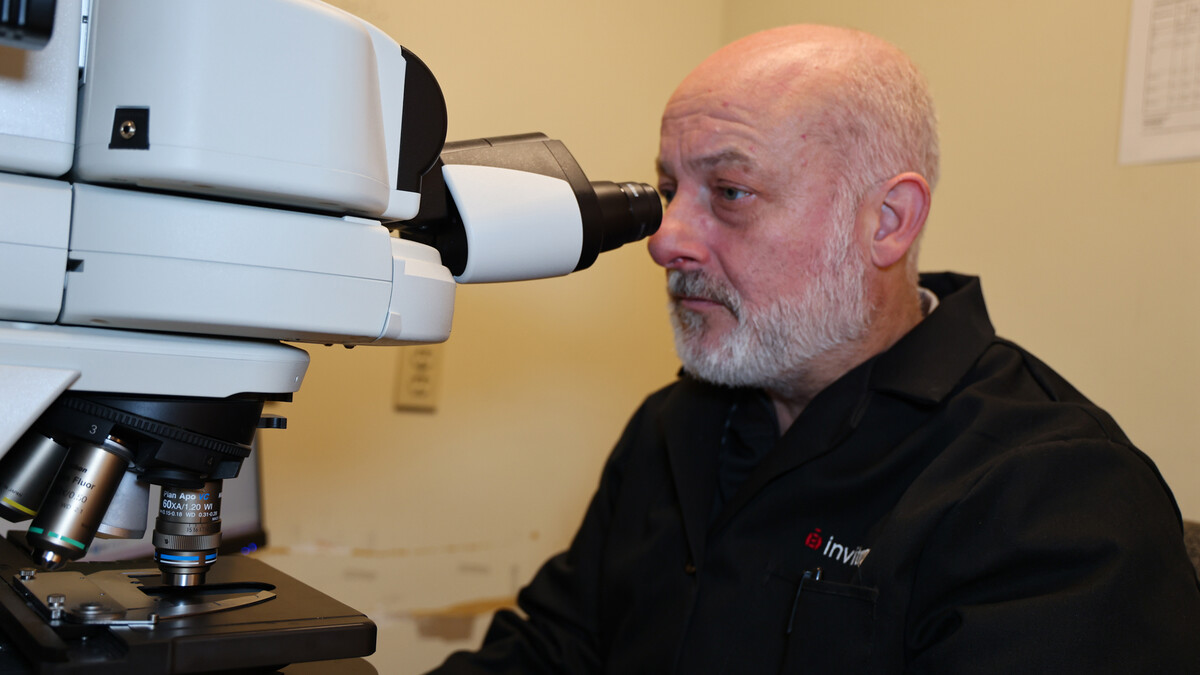
After a 30-year career in information technology, doing everything from flipping switches on the data center floor to software programming and project management, Jane English took a different path.
English went back to school and earned her master’s degree in horticulture with an emphasis in gerontology from the University of Nebraska–Lincoln.
English, who grew up in Papillion, Nebraska, is part of a family of farmers and plant and tree lovers, but earned a computer science degree with a minor in business in 1986 from Nebraska.
“I grew up with a nice combination of food-oriented planting and foraging and beautiful things planting, so I had the whole horticulture thing in my genes even though I didn’t go that route,” English said.
Her last two years working in corporate IT were spent with a local company as a consultant to plan and implement an Enterprise Resource Planning system to replace every business system they had with an integrated platform to manage sales, service, parts and financials. When that project was installed, she knew she was never going to find a project in the IT space that could peak her interest again.
“I wasn’t going to find anything to excite me again in the IT field,” she said. “My choice was to go into teaching, to teach kids how to do it, or do something different.”
While winding down her career in IT and figuring out what she wanted to do next, English started her own business of selecting, arranging and planting new plants for others — mainly for her friends — to see if she liked doing it.
She also decided to offer her IT expertise to a non-profit in Omaha and spent a year working in the social services space. There she saw a different type of career, focused on helping others.
Knowing she had that kind of empathy and with her love of plants and older adults — thanks to her grandmothers — she decided to go back to school as a graduate student to explore horticulture and gerontology in the fall of 2019.
She enrolled in Horticulture 212 Landscape Plants I with Kim Todd, agronomy and horticulture professor, and Gerontology 200 Introduction to Gerontology with Geri Hepp, adjunct instructor in the Department of Gerontology at the University of Nebraska at Omaha.
“I was drawn in,” English said. “Kim described the plants in a way I had never looked at them before. And I just loved the gerontology class too.”
At the urging of Todd, English decided to work on a master’s degree and combine horticulture and gerontology.
“Jane came into the department as an older returning student with little to no formal education or experience in plant materials and design — other than her own boots-on-the-ground work,” Todd said. “She was a sponge and an educational explorer.”
In addition to the required coursework, English had to figure out what to do for her master’s project.
Because her grandmothers had lived in skilled nursing facilities the last year of their lives, English wanted to do something with plants and working with older people. She was keenly aware of the lack of integration of the landscape with the health experience of the residents of these facilities.
After a little research on long-term care facilities in the Omaha area, she called Lois Jordan, registered nurse, president and CEO of Midwest Geriatrics, Inc., for an interview for her Gerontology 4510 Long Term Care Administration class. At this interview, English introduced the idea for her project to Jordan.
“From that point on, we shared a common goal — enhance the lives of the people we serve,” Jordan said.
Using her IT project management background, her goal was to create a methodology and an approach for administrators, maintenance staff, and the owners and operators of senior living communities to use when working with landscape designers and horticulturalists to design, install and manage the outdoor spaces in senior living communities. This would be based on research and best practices for designing new, enhanced and refurbished outdoor spaces in senior living facilities. English concluded, after studying the research and best practices literature, the outdoor spaces in senior living needed to be home-like, comfortable, beautiful and safe with the goal of enticing residents outside more often and for longer durations of time.
English used her methodology and approach, based on research and best practices, to guide the restoration and rejuvenation of the outdoor spaces at the non-profit Royale Oaks Assisted Living and House of Hope Alzheimer’s Care and House of Hope Assisted Living in Omaha.
She interviewed staff and met with groups of residents to understand how they felt about the spaces, what they wanted to see happen and what were the issues they were having on the property that she needed to be aware of. She also reviewed the available research.
English found, after speaking to the residents and studying the research, that the residents’ most desired environmental feature was being able to see birds and wildlife from both inside the buildings and outside. Other highly desired features of the outdoor spaces included the need for the spaces to be visually linked to the indoors, and walkways with a predictable roundtrip loop so residents could start in one place, walk the loop and end up back where they started.
Best practices for planting design with residents’ functional ability limitations in mind should also have multi-season colors on the property allowing for mobility and transportation limitations; include saturated colors to provide sharp color contrast for residents with eyesight changes; have interesting foliage packed in small areas near access doors for those residents who may choose to sit just outside the access doors; have foliage at eye level or lower for residents who may be in wheelchairs or have postural changes; contain visual variety along walkways for residents who may walk slower; include fragrant plants as smell is one of the last senses to fade; and to attract wildlife.
“If the research and recommendations in best practice design are embraced, the outdoor spaces in long-term care facilities can move beyond ‘set it and forget it’ landscapes to beautiful plant-filled sensory spaces that are sustainable and maintain the primary objective of supporting the health and well-being of the residents and staff of the community,” English said.
“We are thrilled and honored to be recipients of her experience and passion,” Jorden said.
Funding for the project came from multiple grants English secured as well as budget allocation changes Midwest Geriatrics Inc. has made for the future upkeep and management of the spaces.
“Lois has gone from no money for plants and landscape improvements and a graduate student who wanted to learn gerontology and plants, and now two and a half years later, she has a plant and landscape management budget, and a plan for the design, installation and management of the outdoor spaces at Royale Oaks Assisted Living and House of Hope,” English said. “It’s come full circle.”
For more information on English’s master’s project, see her seminar recording here.







